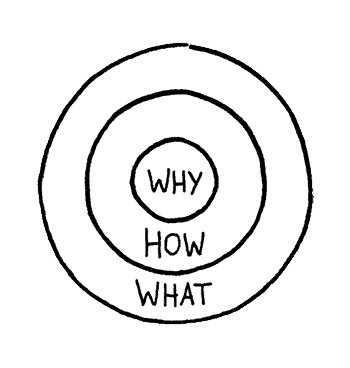Is content marketing worth it?
✻ By Sharon Lapkin
When it comes to marketing strategies, gone are the days of paying top dollar for a sponsored ad package. Businesses are moving their focus to content marketing strategies instead. But is content marketing worth it?
Content marketing is not new by any means, but it’s been gaining popularity as businesses move to online-only models. This type of marketing strategy is going to include blogs, videos and podcasts.
Outbound marketing strategies, such as sponsored ads, aren’t working as well anymore. Consumers have caught on to these marketing strategies, which tend to be disruptive and annoying. If a customer is bothered by your ad when they’re doing a search, it’s not going to turn into a lead. To acquire customers, you need to build trust and a connection.
This is the reason content marketing is on the upswing. Businesses are learning that organic traffic is the best way to bring in new leads and get conversions. In fact, 70% of all businesses use content marketing.
Currently, the content marketing industry is valued at $400 billion and is predicted to continue growing. So, let’s look at content marketing and why it’s worth it for your business.
What is content marketing?
Before asking yourself if content marketing is worth it, it’s important to understand what it is exactly.
You may have some ideas about it that may be true, but content marketing is a complex idea.
Content marketing is a form of inbound marketing that involves developing and distributing content, usually on the internet.

The content should be relevant to your audience and be directly related to your product. Blogs, videos and podcasts are some of the most powerful forms of content marketing that businesses use.
While the concept of content marketing seems to be new, it isn’t. In fact, 92% of marketers and businesses view content as a valuable business tool.
Typically, the goal of content marketing is to increase your brand awareness, engagement and loyalty. You not only want to reach your audience, but you also want to build a connection.
There’s a huge difference between pumping out generic content every hour and creating well-researched, quality content that will generate more business.
Think about this when you scroll through social media. Do you stop and read the sponsored ads? Probably not. Nobody does. We’ve learned that ads are bad, and we don’t want anything to do with them.
That’s where content marketing comes in. Instead of seeing an ad that’s interrupting their search, turn your content into the result of the search.
There are several methods of content marketing that work well. One of the best forms of content marketing is blog writing because it’s versatile and you can write a blog about pretty much anything.
Watch the history of content marketing.
Content Marketing Institute (2015). The story of content: rise of the new marketing.
Types of content marketing
So, now that we know a little about what content marketing is, let’s talk about the different types.
It can be any type of content that you’re putting on your website and social media platforms. Keep in mind that throwing content onto your site just to have it there does not constitute a content marketing strategy.
Content marketing is going to take some thought and a lot of work to produce results, but it’s going to be worth it.
Blog writing
A content marketing strategy worth having is going to include blog writing. No, we’re not talking about an online diary of your thoughts and feelings. Blog writing is a powerful tool that is the go-to for improving search engine optimisation (SEO.)
Writing blog content that pertains to your product with well-researched and engaging content will draw in customers organically.
Think about all of the times you’ve typed a question into a search engine and clicked on the first relevant blog. That could be you!
The best part of blog writing is that it can be tailored to essentially any topic. If you have a way with words, you can write them yourself. But keep in mind that 90.63% of blog posts get zero or no traffic from Google.
So, unless you’re a good writer with SEO knowledge, you might want to outsource your blog posts. Think about hiring an SEO wordsmith who can help you increase the organic traffic to your website.
For example, if you’re selling microgreens, you could create a blog post with a longtail niche keyword that will be in searches regarding the topic. The blog post should be well-researched, with content-engaging content that will actually draw the reader in and get them clicking around your website. That way, those searching for information on microgreens will see your blog posts in the search, click on one, and end up on your page. This is likely to generate interest in your product that can turn into a lead or sale.
The average blog is around 1100 words, but you can create shorter or longer blogs and see what works best for you. Along with blog writing, you can utilise other content marketing tools to enhance the user experience.
Video content
Another great tool to make content marketing worth it is creating videos. Video is a powerful and popular marketing device.
Currently, 48% of customers rely on videos when searching for a product.
Another great tool that makes content marketing worth it is creating videos. Video is a powerful and popular marketing device.

It’s easy to understand why people rely on videos when searching for a product. Not everyone wants to read a 2,000 word blog post on juicing celery, so a video that contains a how-to, or other content related to the blog, can help increase your engagement.
Infographics
An infographic is exactly what it sounds like. It’s an informational graphic that can be used to explain complex ideas. They’re a great addition to a blog post to help explain key points and will create engagement from the folks who don’t feel like reading the entire post.
When you’re deciding whether content marketing is worth it, it’s important to remember that everyone is different. While one person may want to read a long-form blog, others will benefit from being able to look at an infographic. The infographic below is a good visual summary of the different points we’re discussing in this blog post.
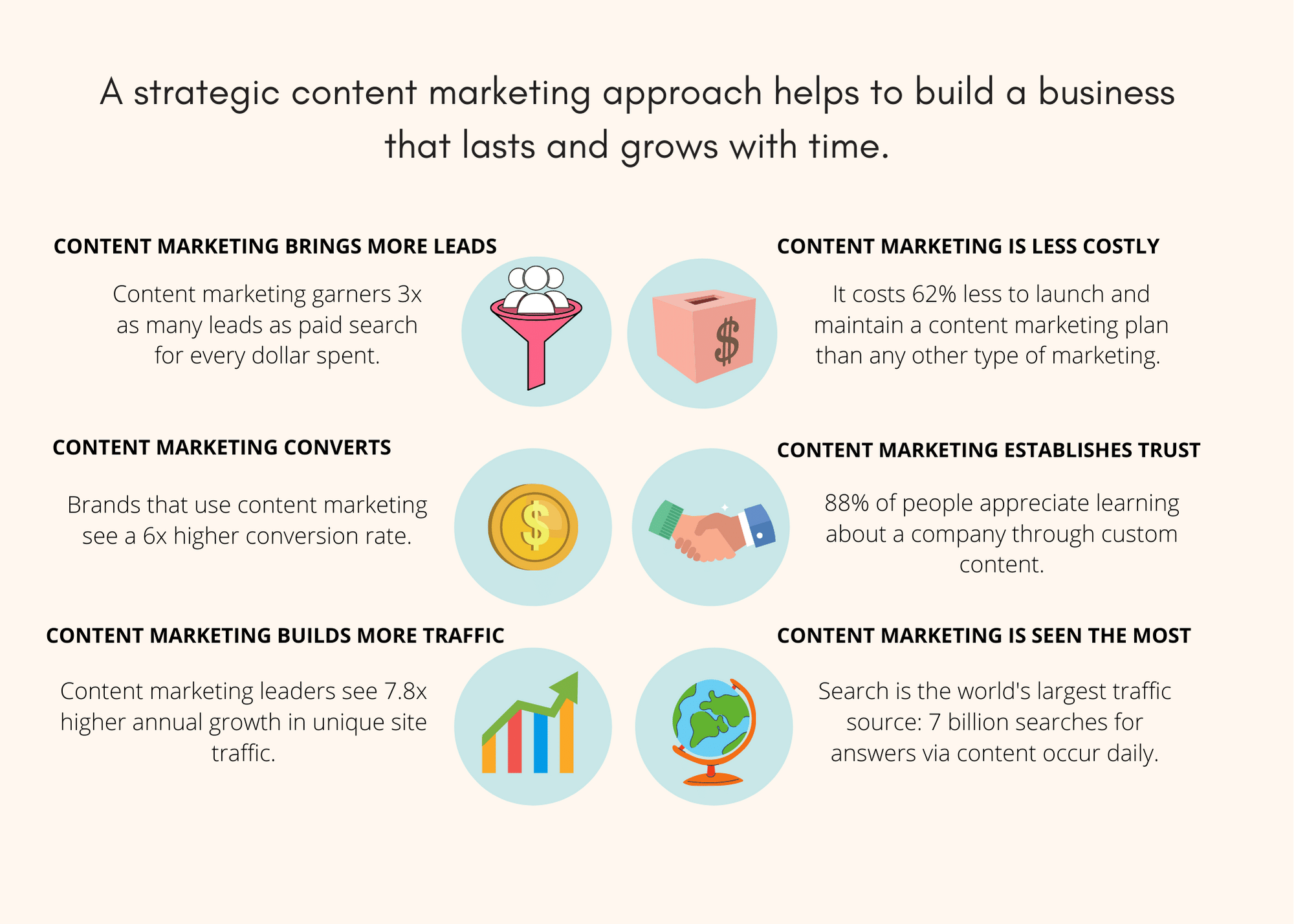
Podcasts
According to a study in the US, 49% of 12 to 32-year-olds listen to a podcast at least once a month. Podcasts may not be the first thing you think of with content marketing, but they are a great tool. If you’re unfamiliar, a podcast is an audio recording that consists of spoken words and information surrounding a specific topic.
One way to utilise podcasts is to create blog content summarising a podcast, or elaborating on a specific point. You can also turn it around, and create a podcast revolving around the blog post. This again will give your audience the option to choose how they are absorbing your content and engaging with it.
Other types of content marketing
A how-to is a practical guide or step-by-step instructions on how to do something or achieve an objective.
A meme is a photo, illustration or/and text that’s usually humorous and spreads rapidly online, often through social media channels.
A case is an in-depth study of a person, group, community or event. It serves to demonstrate a complex issue or to analyse it from a particular perspective.
A checklist is a list of all the things you need to do. It’s a good way to organise and manage tasks, and to ensure things are not overlooked or forgotten.
User-generated content is created by people rather than brands. It can include text, videos, podcasts, photographs, illustrations and reviews.
Newsletters are used by businesses and organisations to share new information and news through their online mailing list.
The mailing list is composed of customers and people who have signed up to receive this correspondence via email.
Why do you need content marketing?
Now, the big question is whether content marking is worth it or not. The short answer is yes, it is! We’ll explain why.
You'll earn their trust
Once deemed credible on subjects pertaining to your product, you’ll gain the trust of your customers. Trust is one of the biggest things you want to get from your customers. It creates loyalty, and they’ll be more likely to recommend your business to a friend or family member if they trust you.
Today, it’s all about custom content. Creating a narrative around your brand and giving your customers a story and behind-the-scenes access makes them feel special. Providing credible and trustworthy blogs will keep them coming back for more information too.
It's affordable
Creating a content marketing strategy that’s worth it is 62% cheaper than other types of advertising campaigns. So, instead of paying for ad packages on social media platforms, you can create content in-house or hire freelancers.
Most social media platforms are free to sign up for, and if you have a powerful content marketing strategy you may not find it necessary to pay for sponsored ads.
Content marketing increases organise website traffic
Those with successful content marketing strategies typically see 7.8 times higher growth in website traffic. Optimising blogs correctly using SEO will increase your rankings in searches for keywords related to your business.
You'll maximise your views
Using content marketing will increase your website views. If you have an extensive range of blog posts, users can spend plenty of time clicking through your content once they’ve found one post they like. You can create backlinks to keep them browsing, which will improve your views and traffic stats.
Having SEO content on your platforms will help search engines pick up and show your pages. If you have video content attached to your blog, even better. Someone may read the blog, then spend time watching the video, as well. Google also tends to favour blog content that has videos and images.
The bottom line: Is content marketing worth it?
The bottom line is that yes, content marketing is worth it. If you’re wondering why you need content marketing, it’s simple.
Consumers aren’t going to be swayed by a coupon or a paid ad these days, you need to give them something more.
Creating engaging blog posts is a great way to start using content marketing in your business strategy. Try it out today!
Before you go
To learn more about content marketing check out How to be a good content writer.
If you’re keen to improve your blog posts see How to write a smashing blog post.
Want to learn how to correctly optimise your content? Read Is SEO really needed.
And if you think your business is fine without a blog, take a look at Does my business need a blog.
About Sharon Lapkin
Sharon is a content writer and award-winning editor. After acquiring two masters degrees (one in education and one in editing and comms) she worked in the publishing industry for more than 12 years. A number of major publishing accomplishments came her way, including the eighth edition of Cookery the Australian Way (more than a million copies sold across its eight editions), before she moved into corporate publishing.
Sharon worked in senior roles in medical colleges and educational organisations until 2017. Then she left her role as editorial services manager for the corporate arm of a university and founded Textshop Content – a content writing and copyediting agency that provides services to Australia’s leading universities and companies.







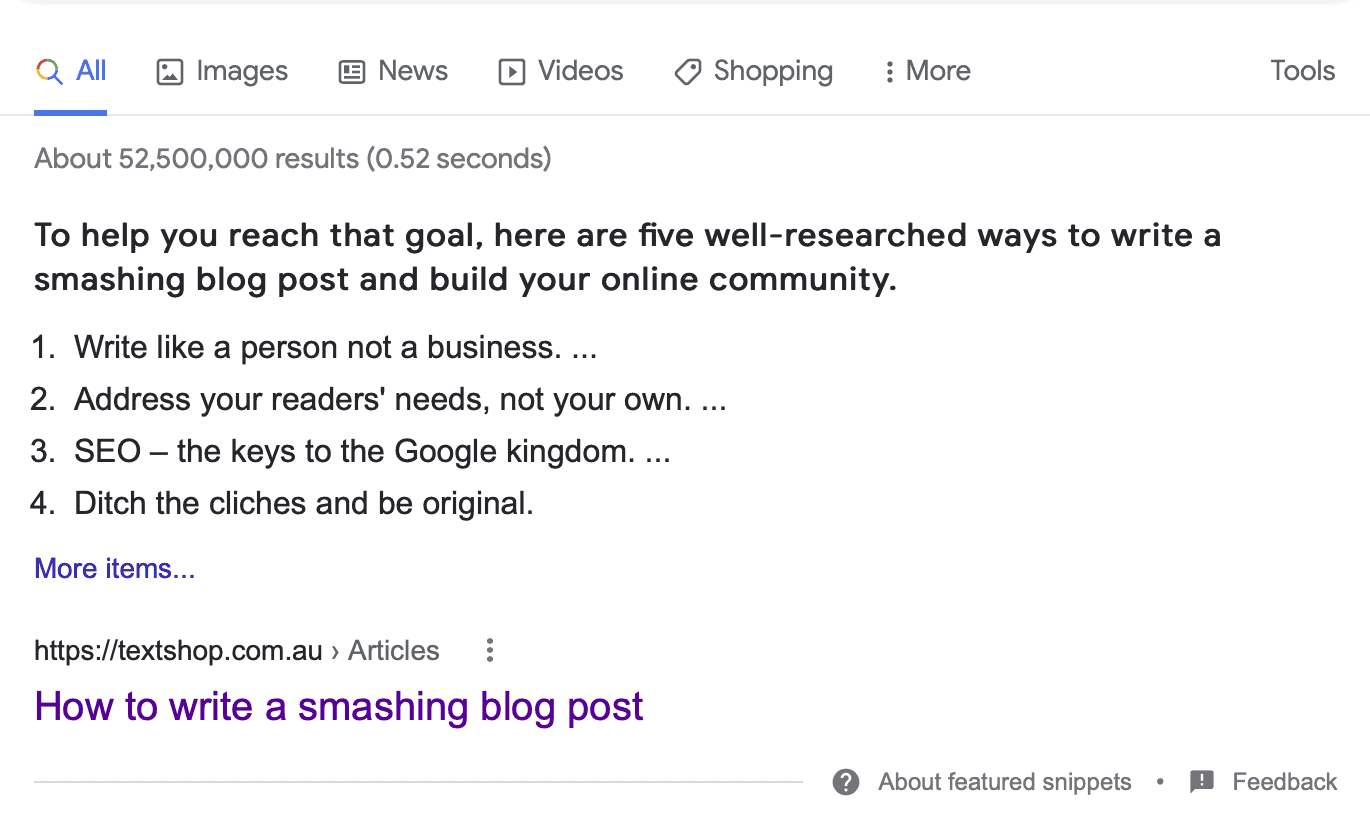



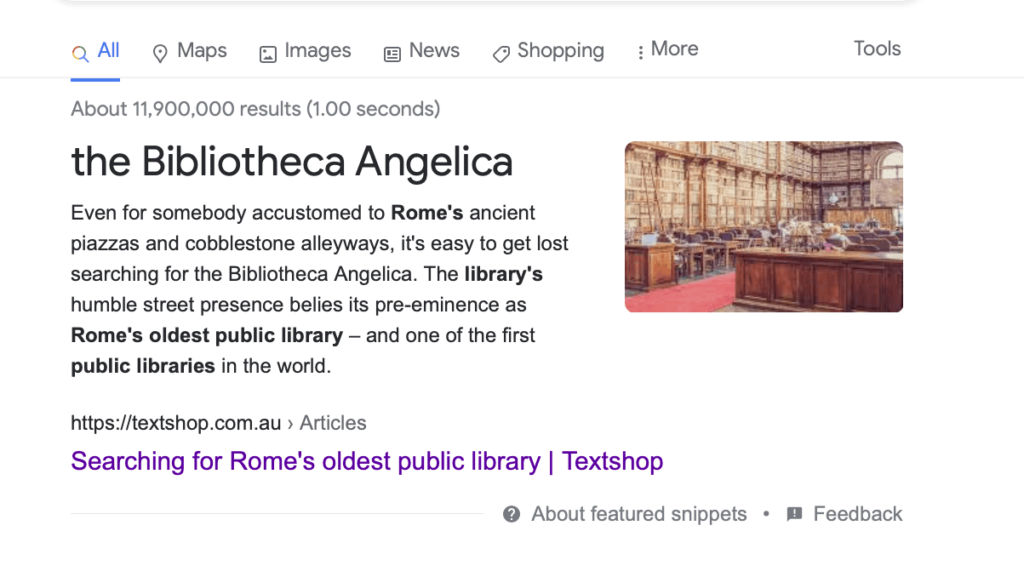
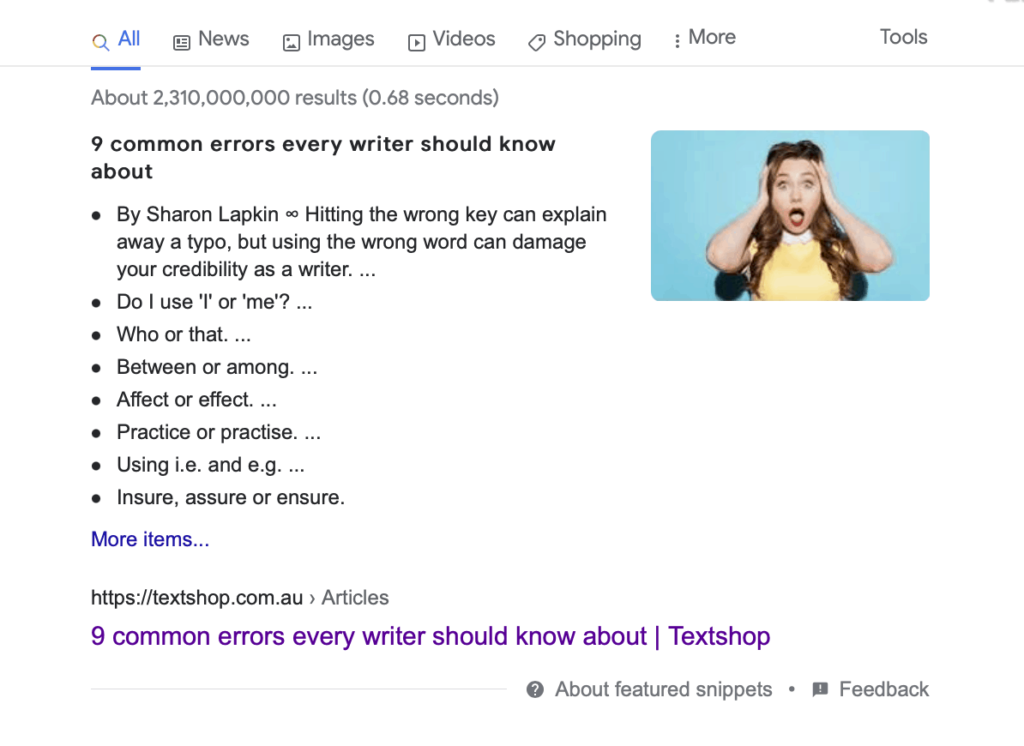

 Lastly, consider context when you add your keyword into the alt text. Adding random keywords may cause your site to be seen as spam.
Lastly, consider context when you add your keyword into the alt text. Adding random keywords may cause your site to be seen as spam.



